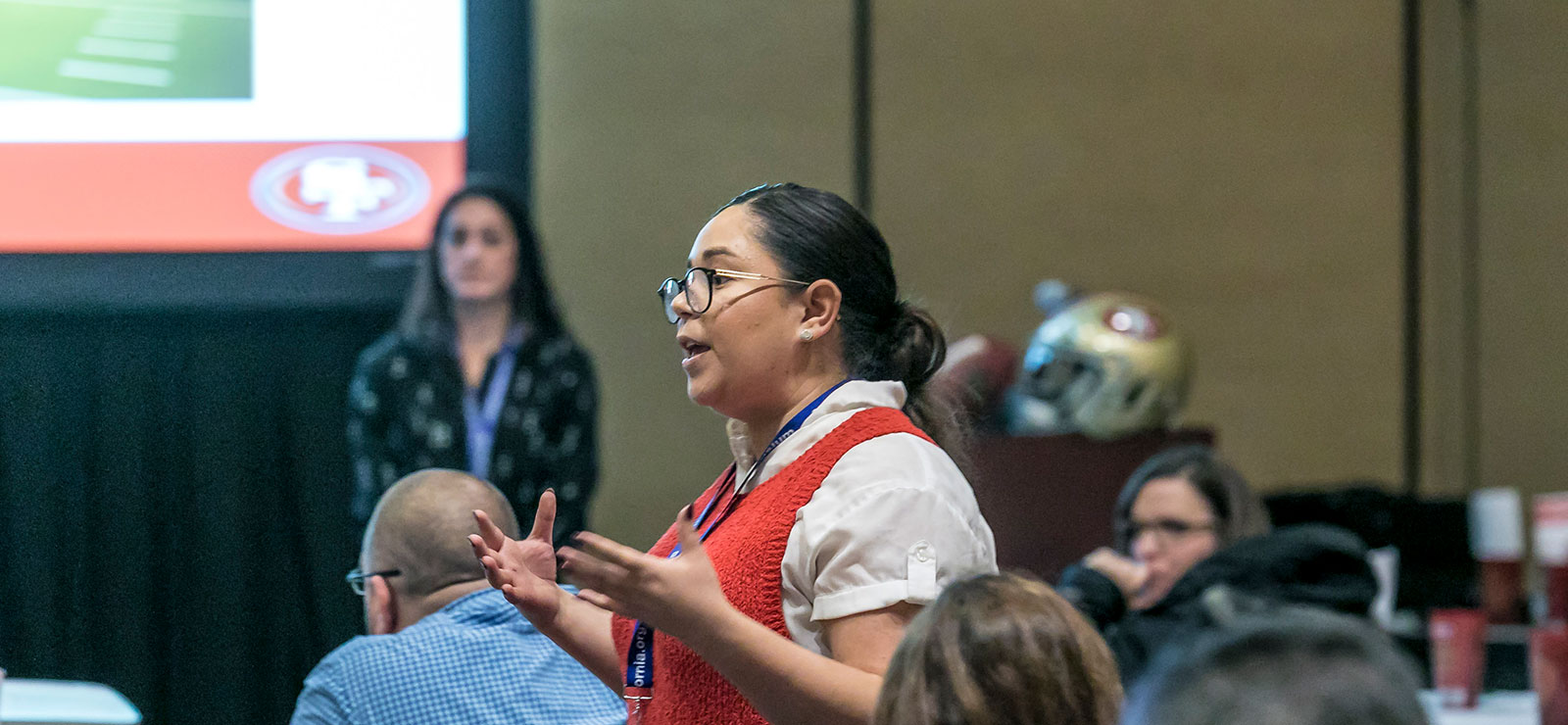California STEAM Symposium – 5 Key Takeaways
By: Bronwen Phillips
Last month, the San Francisco 49ers STEAM Education Program participated in the 2017 California STEAM Symposium, where manager of STEAM Education Sofy Navarro and senior STEAM educator Bronwen Phillips participated. The 49ers team spoke to a crowd of educators and STEAM influencers about the 49ers education program, which leverages the game of football to better engage youth in subjects such as science, technology, engineering, art, and math (STEAM). Jesse Lovejoy, Director of the 49ers Museum & STEAM Education program, also attended the STEAM Symposium and teamed up with the Anaheim Ducks, Learn Fresh, and the Science of Sport for a panel discussing the untapped relationship of sports and education. This panel introduced educators to various projects within the sports industry that articulate the use of sport to inspire interest and engagement in education through STEAM concepts and 21st Century life skills.
To further support California educators, the 49ers staff also introduced symposium participants to the newest 49ers educational platform: Teacher Professional Development. The 49ers are the leading professional sports organization in support of STEAM learning concepts for youth, therefore they place a large emphasis on maximizing development opportunities for educators as well as students. During the California STEAM Symposium, the 49ers STEAM Team had the pleasure of collaborating with many state educators who expressed their interests in STEAM learning and available educational resources. Here are 5 key takeaways gleaned from the California STEAM Symposium for collaborating with your peers:
- Explore Opportunities for Growth
Look to expand developmental resources available to educators – such as symposiums, workshops, PD sessions, etc. Taking action and registering for developmental opportunities will enable educators to expand their skillsets, collaborate and network with other professionals, and provide feedback which further supports participants. In addition, don’t forget to use one of the most accessible resources available: fellow teachers and community members! A great way to acquire new information is to ask questions or get advice from your peers, school administrators, school districts, parents, and the community. It is always possible to glean from the experiences of others and modify their attempts to whatever suits teachers and their students best.
- Be Diverse
Look for STEAM learning opportunities across the board, without placing restrictions on the grade-level taught. Sessions at the California STEAM Symposium ranged from grade-level concepts to various application processes to accommodate the various responsibilities of all educators. Do not allow educators to restrict their vision or opportunities for growth, understand there may be information in a session that can be modified to accommodate numerous grade-level and student interests.
- Understand Individual Weaknesses
In every instance, individuals learn from each other and from our own failures. It is important to understand that starting from the beginning of any process supports the identification of individual strengths and weaknesses. Participating in collaborative and developmental activations can allow educators to address their own areas of weakness, and potentially work with their peers to provide a solution to areas that need improvement. Do not be afraid to test out something new. If it doesn’t work the way it was intended, then refine your design and look for alternative activations or speak to fellow peers and gain their insight. From creating new classroom activities to marketing professional development content, welcome failure and use it as an opportunity to reinvent your vision and learn from others.
- Start a Conversation
An important question brought up during the 49ers STEAM Education Program session was, “What if our local sports teams or community organizations don’t have educational programming or resources?”
Take action and engage in a conversation! An important takeaway from attending activations like the California STEAM Symposium, empowers educators to ask these specific questions and gain ideas of how to create a call to action. Some organizations may not realize there is a need for engaging youth and STEAM.
- Connect with Colleagues
Learning occurs across all ages and generating opportunities to learn from a group of your peers, is an energizing and collaborative way to expand your knowledge base and network with other professionals. Attending educational activations will allow participants to increase their pool of colleagues and influencers, which will ultimately increase the amount of resources and support previously held.
The 49ers STEAM Education Program is committed to growing the developmental opportunities and resources available to all educators across California. A large part of academic growth is surrounding yourself with a strong support team, which can be made up of a multitude of individuals. An important factor of development includes building a strong supportive unit to allow for greater opportunities to share ideas, collaborate on STEAM initiatives, and broaden your pool of educational influencers.
(Photos courtesy of 2017 California STEAM Symposium)

